#sujim
Explore tagged Tumblr posts
Text
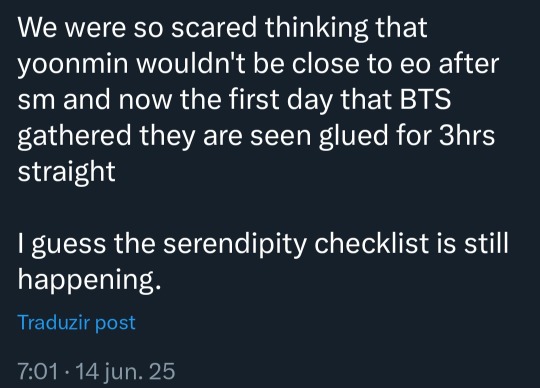

#yoongi#jiyoon#bts jimin#yoonmin#jimin bts#jimin#min yoongi#park jimin#bts army#miniminisbts#miniminis#sujim#sugajimin#suga#suga bts#agust d#tom and jerry#jiga#yoongi bts#bts#jimin bangtan#jiminsuga#yoonmim#yoonmim twitter#tonymontanaduo#amor#orange mint yoonmin
21 notes
·
View notes
Text

i beg you dont embarrass me, motherfucker!
just testing.
68 notes
·
View notes
Text

Serendipity
Made this for Complementary: a yoonmin fanzine ♡
#yoonmin#sujim#yoongi#jimin#serendipity#bts fanart#artists on tumblr#illustration#traditional art#watercolour art#painting
13 notes
·
View notes
Text
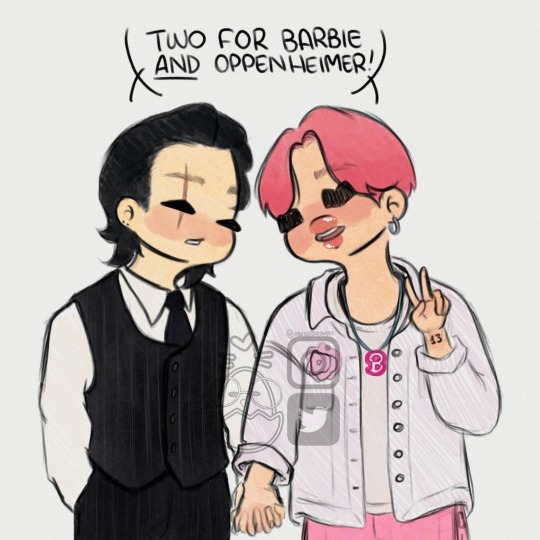
two tickets, please
#bts#bts fanart#jimin#suga#yoonmin#bts chibi#procreate#art#sujim#barbie#barbie movie#oppenheimer#oppenheimer movie
84 notes
·
View notes
Text
let them be them, let us be us | yoonmin
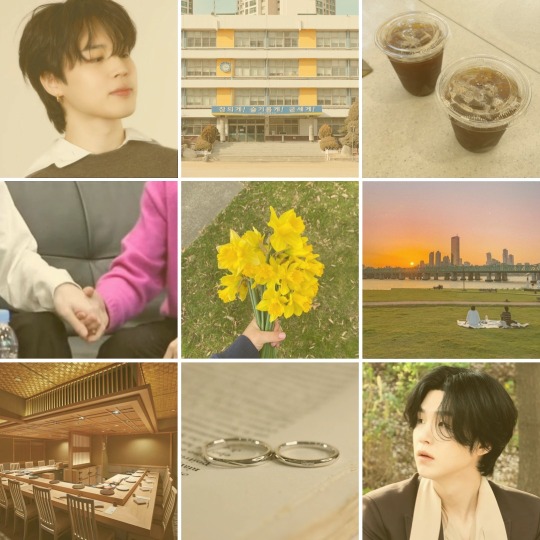
“Oh- Jiminie,” Yoongi whispers softly, eyes wide open as he looks at what’s inside the box, “Is it-”
“It’s a promise!” he cuts, nervous, “um, it’s not- I’m not-” he takes a deep breath, “I know we can’t, yet, but I wanted to have something to symbolize that we are together, that you’re the love of my life and something to remind you of me,” he finishes with a shaky smile.
or in which Jimin starts working at a new school as a kindergarten teacher, receiving some inappropriate comments about his relationship; he's sad and Yoongi tries to cheer him up the best way he knows how to.
https://archiveofourown.org/works/55398703
moodboard cr to: my bestie
#bts#bangtan sonyeondan#min yoongi#park jimin#yoonmin#jiyoon#sujim#yoonmin fic#fanfic#fic#ao3#ao3 fanfic#sof writes#bts fanfic#domestic fluff
10 notes
·
View notes
Text
Their flirting always make me giggle 🤭
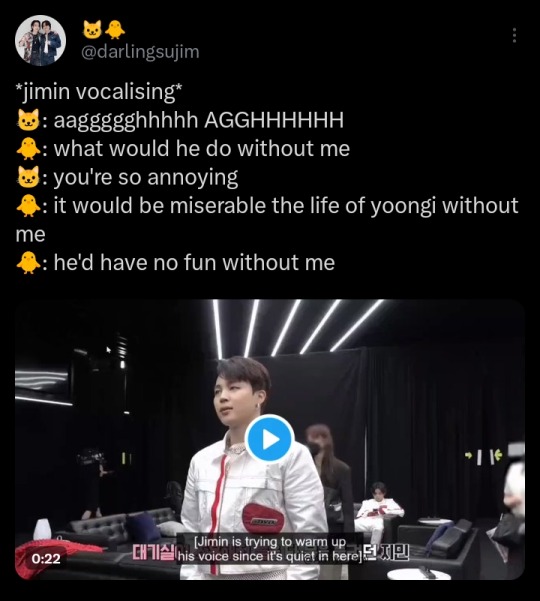
#yoonmin#suji#park jimin#bts#min yoongi#bangtan#suga#2min#jimin#yoongi#jiyoon#sujim#ptd#permission to dance#dvd
23 notes
·
View notes
Text
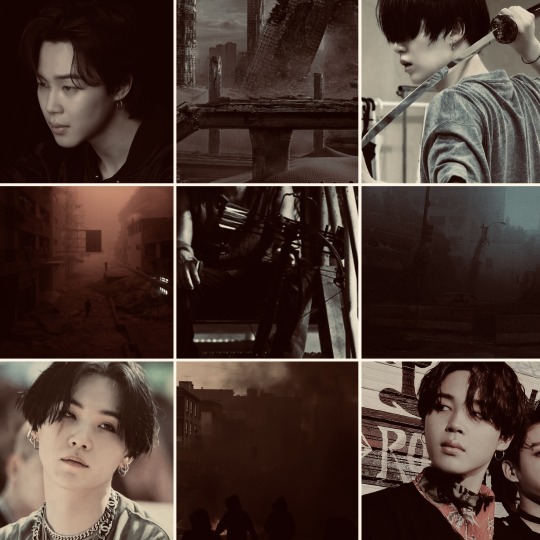
Stay Alive (x)
When the world fell apart five years earlier, leaving Jimin living in a urban dystopia and fighting for survival, he thought he was alone. Then one day he comes across a man with a sword and an all too familiar voice.
Rating: M
Status: Complete
AO3: here
Threadfic on twitter: here
23 notes
·
View notes
Text
Vertigo
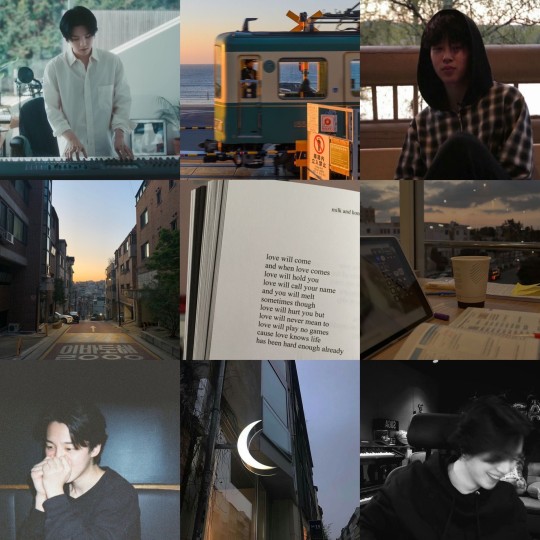
You're scared of heights, that's vertigo You wanted lights, go see a show You ran away, that's touch and go You're scared of love, well, aren't we all? Well, aren't we all? Yeah, well, aren't we all?
Park Jimin has never fallen in love and hasn’t been in South Korea in 17 years. He promises to make the most out of it. He plans to do everything he hasn’t done. Though falling in love fits into that category, it wasn’t part of his plan. Not when he’s only here for 2 years to finish his Master’s.
Min Yoongi has only fallen in love once with the same girl for 10 years. When they finally call it off and wedding plans are cut short, Yoongi swears off of love forever. Though love isn’t done with him yet. It finds him four years later, even as he’s still trying to pick-up the pieces of what went wrong.
[Notes: I originally posted this on Ao3. I'll still be updating there and here. I just ~ visually~ like posting on Tumblr. ]
Chapter 1: A Quarter Life Crisis
Chapter 2: Going Out
Chapter 3: The Art of Not Knowing
Chapter 4: All Good Things
Chapter 5: Come To An End
#yoonmin#yoonmin au#min yoongi#suga#agust d#jimin#park jimin#run bts#yoongi#sujim#bts fanfic#bts au#bts au fic#grumpy yoongi#sunshine jimin#kim namjoon#rm#kim seokjin#jin#bts v#kim taehyung#jeon jungkook#jung hoseok#j-hope
6 notes
·
View notes
Text


𐙚Yoonmin
2 notes
·
View notes
Text

🐈⬛🤍🐈
#bts fanart#bts#fanart#artists on tumblr#bts yoongi#bts suga#2muchboba#jimin#cat hybrid#yoonmin#yoonmin fanart#yoonmin au#sujim
3 notes
·
View notes
Text
"You didn't know? It's even more surprising that you didn't know."




#jiyoon#yoonmin#yoongi#amor#jimin#bts jimin#bts army#park jimin#jimin bts#min yoongi#foryourepage#Yoonminau#tom and jerry#miniminisbts#miniminis#sujim#suga#Jiga#jimsu
14 notes
·
View notes
Text
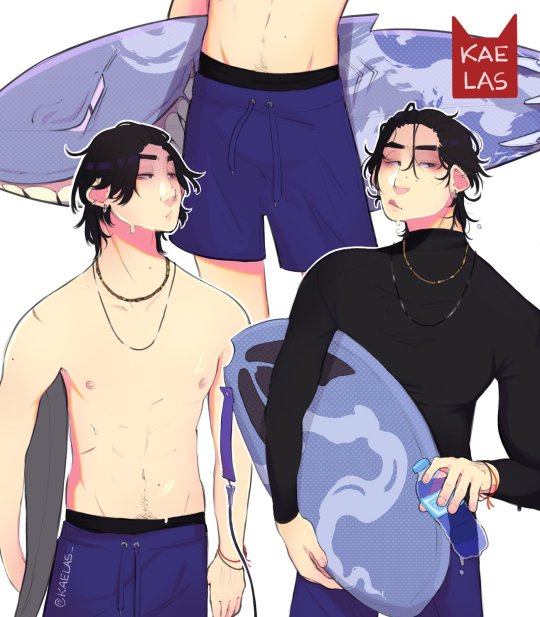

[reposting]
9 notes
·
View notes
Text

Preview of my piece for Complementary: a yoonmin zine ☆
» Preorders are open! «
#yoonmin#bts fanzine#yoongi#jimin#bts fanart#preoders open#watercolor#artists on tumblr#sujim#serendipity
11 notes
·
View notes
Note
I think they got closer during that time, tbh. They're not obligated to show off for people to know they are ok. The real question sb, why did Jkk cease to be THE most "active" ship? It's apples to oranges, but still. I don't see many think pieces being written about that. People love to talk about the Japan trip, but if it was so romantic, why has there been such a huge change between them afterwards? Instead of seeming closer, they hv drifted. Idk, people have weird priorities. All I know is that Sujim has been sailing since BE era, for sure. But my ask is: Doesn't it feel like there was a big shift for them when Ch 2 started? They just seem so much more open and relaxed than before.
Can I nickname you Sujim Anon? I love that you used that term!
I feel like I’m biting my tongue because of course I have thoughts on other pairs, but I also don’t want to get into a game of “compare the ship,” which never seems to end well. It’s very rare that people change their minds, so it’s just a futile exercise. The only thing I will say is that to me, the Japan trip—and it’s thorough documentation and openness at a critical juncture in the timeline of the group—is evidence that it was platonic. I know others see it much differently, and that’s fine.
To answer your question, yes it does feel like we’ve seen a shift during Ch 2. They seem more open and relaxed, both in terms of their body language and interactions but also in terms of what they are willing to tell us.
We started with Festa 2022 and Jin asking Jimin what he’d been up to and Yoongi answered for him and brought up the song. Then the tourism ads, their frequent mentions of each other during lives and Suchwita, many references to spending time together outside of work, singling each other out when they got questions about which member(s) they see the most or last spoke with, Jimin attending D-Day three times, Yoongi showing up at the music show and in Jimin’s fan call, Yoongi saying he met up with Jimin for drinks the day after the last Seoul concert (last concert prior to the three Final concerts, that is), etc.
I won’t speculate as to why that change in their level of openness has occurred. I’ll let the reader decide what to conclude.
4 notes
·
View notes
Text
| sfw yoonmin (sujim/jimsu) oneshots |
• Feral Attraction
• Beyond Expectations
• The Call Of The Soul
• My World
• Soften Me Up
• Your Hand In Mine
• The Frog Prince
• Click
• Higher Than Love
• Safe Landing
0 notes
Text
Thanks, I try.
Fair. I really like the sound of enlumineuse, personally. And luministe is also really nice. Then again, most of the light-related words seem to come out sounding really pretty in French, so it makes sense. :)
Ooo… 😨 Yeah, that would not go over well. Though, I actually wish that there were some sparrowmen (male fairies; comes from the Tinkerbell movies) in the games. It could be interesting to see the designs. Something like an Oberon or Puck equivalent. But, yes. I agree.
Yep. Sorry. I know you’ve got the Lanayru Desert as being in the same locale as the Wild Era's Lanayru.
Yes!!! Thank you! And, I'm not really looking for much more than your opinion & anything you can think of regarding it. But I'll take a simple "sounds good" or "sounds bad."
Okay, to start off, there are 8 courses, but the portions would be small to account for that: Sakizuke (Appetizers), Suimono (Soup Course), Mukozuke (Sashimi Course), Hassun (Seasonal Platter), Yakimono (Grilled Dish), Takiawase (Simmered Dish), Shokuji (Rice Course), & Mizumono (Dessert Course).
Beware a wall of text beyond this point:
Sakizuke (Appetizer): A single, bite-sized portion of Yūhikaki no Shiraae (夕陽柿の白和え: ユウヒカキのしらあえ) or Vespersimmon Salad with Koshindōfu Dressing. (“Vesper” Persimmon with Chestnut Tofu Dressing.) It’s designed to showcase the season's bounty while also awakening the palate or whetting the appetite in preparation for the rest of the meal. The dish itself is served inside a hollowed-out persimmon for visual appeal.
A/N: IRL, Kaki no Shiraae (柿の白和え) is typically made using Gomadōfu (胡麻豆腐, Sesame Tofu), which is a white non-soy tofu made with water, sesame paste, & thickened with kuzu starch that's often served chilled. However, I’ll use what I'm calling Koshindōfu (木心豆腐) or, IRL, Kuridōfu (栗豆腐), instead. So, a tōfu made with toasted Wood Hearts (chestnut collectable from Phantom Hourglass & Spirit Tracks) ground into a paste (neri-kuri), instead of sesame paste (neri-goma). Moving on, the kuridōfu is mashed & mixed with dashi, mirin, & soy sauce, which makes the dressing. It's white & very creamy. Then, there's a number of different fall veggies such as parsnips, mushrooms, & carrots, all cut into tiny pieces, then coated in a white miso glaze & roasted. They are then mixed with the dressing, some spinach, & the pieces of fruit flesh that were scooped out of the persimmon, alongside a handful of toasted pepitas (pumpkin seeds) & chestnut chunks before being spooned back into the hollowed-out persimmon. Again, for visual appeal. The reason for roasting the parsnips is that doing so supposedly brings out an earthy caramel-like sweetness that's also very reminiscent of gingerbread (I really wanna try some sometime). I'd thought it might compliment the overall taste of the dish. Plus, the roasting & miso-glaze should give the parsnips a crispy exterior & tender interior that should contrast nicely with the soft & silky texture of the white dressing. As for the white miso, it's more mild than ordinary red miso, while still possessing a mellow, savory umami sort of depth. Overall, the small portion of fruit salad is supposed to have a delicate, nut-forward, subtle sweet-umami flavor & a creamy texture from the tofu sauce. With little bursts of extra sweetness from the pieces of persimmon. Anyway, it's supposed to have a very balanced & layered flavor. - Also, the Vespersimmon is just an idea I had for another fruit.
Suimono (Clear Soup Course): An autumnal Matsutake Suimono (松茸お吸い物). It's a warming, comforting, clear soup that's earthy & woodsy & amazingly aromatic, with a light, delicate flavor of fall mushrooms that should work really well with the light richness of the dashi. Super simple, but yummy nonetheless.
Mukozuke (Sashimi Course): Fresh, high-quality Benizake-Harasu Sashimi (ベニザケハラスサシミ). Thin slices of Hearty Salmon belly that's been marinated in a Warisu-Jōyu (醋醤油: ワリスジョウユ) marinade through the Sujime technique (Warisu being vinegar that's been diluted with ice or cold water) & garnished with edible autumn leaves for a seasonal touch. All to impress the fiancé of the elderly Sheikah woman's beloved granddaughter by showcasing the ocean's bounty while highlighting seasonal fare. The salmon belly is rich & buttery with a luxurious texture that practically melts in your mouth before ending with a nice, clean finish. It should contrast quite nicely with the lighter persimmon appetizer.
Note: For the marinade, Stambulbs (my hc is that its garlic) & leeks are lightly chopped, then added to a mixing bowl with a Warisu-Jōyu marinade made up of a mixture of soy sauce, sake, & a forbidden rice Komezu (米酢: Rice Vinegar) before leaving it to infuse. The marinade should help to create a unique flavor, but restraint & balance are both absolutely crucial to maintaining the natural texture & taste of the salmon. Otherwise, it'd likely overpower the fish & that's no good. As such, exact proportions are necessary. However, when done correctly, the soy sauce gives a savory, salty base. It just needs to be monitored, or it could become too intense. The light-bodied sake should also tenderise the salmon, making it remarkably tender, to the point of practically melting in your mouth. At the same time, it's important not to let it infuse into the fish for too long, as it may result in an unpleasant texture. It should also bring with it a gentle sort of sweetness with a slight umami flavor that would complement the natural richness of the fish quite nicely. Together, the soy sauce & sake should lend more of a savory-umami while the Komezu would add a complimentary tangy yet slightly nutty element with a subtly sweet note. This would, ideally, help to balance out the more salty flavor of the soy sauce.
Another Note: Sujime (酢締め: スジメ) is a specific technique in which fish is marinated in a vinegar-sake mixture for a short time, with the intent to soften the flesh & enhance natural flavors. And the vinegar used in Sujime is known as warisu (醋: ワリス). Warisu simply being the term for vinegar that's been diluted with ice or cold water. Here, shōyu is also added. Ergo, Warisu-Jōyu.
Hassun (八寸: Seasonal Platter): A Fall-Veggie Platter. - A perfectly-balanced platter that is arranged artfully with a triad of bite-sized fall specialties that are (hopefully) fit to delight & intrigue. Called Aki-Yasai Hassun (秋野菜八寸: アキヤサイハッスン) by the residents of Kakariko & Kasuto, the small portions of food featured are Tōigoshin (糖炒木心: トウイゴシン, Sugar-Fried Woodheart Chestnuts), Daijō no Nimono (大薯の煮物: ダイジョのニモノ, Simmered Purple Yams), & Yōsai-Kabocha no Nimono (ヨウサイカぼちゃのニモノ, Simmered Fortified Pumpkin), all arranged in an aesthetically pleasing manner to showcase a variety of autumn flavors, textures, & even colors. The overall flavor profile is a marriage of sweet & savory between the dulcet sugar-fried Woodhearts & the savory accord of the Nimono dishes. Then, for mouthfeel, there's the slight crispiness of the chestnuts that are complemented by the creaminess of the yams & the tenderness of the pumpkin, making for a diverse array of textures. The differing flavors & myriad textures is expected to be a study in contrasts that play off of each other well to create a unique culinary journey. Even the visuals would be a lovely painting of glossy brown & deep violet, offset by vibrant bursts of orange. Truly, a varied feast for the senses & a marvelous display of the beauty that autumn brings.
Note: Tōigoshin (糖炒木心: トウイゴシン: Sugar-Fried Woodhearts) are based on Tōi-Kuriko (糖炒栗子: トウイクリコ), which are Chinese-style sugar-fried chestnuts. They're made by pan-searing them with butter & sugar or honey. Very appealing with their shiny-sweet gloss. The trick to this is adding little pebbles to the pan, which will absorb some of the heat while the chestnuts roast over the fire. This, supposedly, results in nuts that are wonderfully soft with a lovely creamy texture, not unlike yams or sweet potatoes. Yamaimo no Nimono are based on IRL Satoimo no Nimono (里芋の煮物: サトイモのニモノ) & Satsumaimo no Nimono (薩摩芋の煮物: サツマイモのニモノ). Satoimo no Nimono is also called Satoimo no Nikkorogashi (里芋の煮っころがし: サトイモのニッコ��ガシ) & is a dish of taro simmered in dashi, sake, soy sauce, mirin, & a bit of sugar. Meanwhile, Satsumaimo no Nimono is Japanese sweet potatoes simmered in water with sugar & a squeeze of lemon. With coconut milk being an optional addition. And Kabocha no Nimono is pumpkin simmered in a sweet-savory broth made with mirin, shōyu (soy sauce), Cane Sugar, & dashi broth.
Yakimono (Grilled Dish): Miso-Glazed Hearty Bass & Pepita-Cooked Shin-Zarusoba. Set to highlight the season's bounty by offering a satisfying main course. - Makkusubasu Miso-Yaki Kabocha-Shu Shin-Zarusoba (マックスバス味噌焼き南瓜種新笊蕎麦: マックスバスミソやきカボチャシュシンざるそば). This fall dish is miso-glazed Hearty Bass with chilled shin-soba that's been cooked in dabocha-shu dare (南瓜垂れ: カボチャシュダレ, Pumpkinseed Butter-Sauce) with a tsuyu sauce on the side for dipping. The pumpkinseed sauce is made from a blend of pumpkinseed butter, soy sauce, rice vinegar, & sugar, with the optional dashi. Should make for a rich & earthy, savory-sweet sauce with a creamy, nutty texture that I think would compliment the overall dish quite nicely. You cook the noodles in it. Shin-soba being soba noodles made from freshly-harvested buckwheat, which is considered to be the sweetest & most flavorful kind. An autumn specialty. In this dish, you coat fish fillets with Saikyozuke (西京漬け) marinade; made from a mixture of Saikyo miso (西京味噌), sake, mirin, & egg yolk, with a little ginger. Then, you broil the fish so it has a nice burnish. Could be considered manzoku dekiru shokuji (満足できる食事): "A meal that brings satisfaction," which indicates a satisfyingly hearty meal. - A/N: The IRL sauce (Goma Dare) used to make Gomasoba is a mix of sesame paste (or tahini), soy sauce, rice vinegar, sugar, & optional dashi or mirin. Add-ins were recommended to help with a sesame sub; fresh ginger & garlic.
Takiawase (Simmered Dish): Braised (Seared then Simmered) Young Doe Shank & Fall Crops. This flavorful dish has a rich umami that leans a bit towards savory, highlighted by a delicate spice. It's prepared by taking deer shank & tenderizing it in a simple traditional shōyu-sake marinade with a touch of Courser Bee Honey, alongside a pinch of grated ginger, minced Stambulb, dried marigold petals, a dash of rosemary, a pinch each of ushio (a type of salt harvested from seaweed when you dry them, thought to amp up your cooking) & black pepper, then seared in Warm Safflina oil (so as to develop a rich & crispy, flavorful crust with a tender, juicy interior & allow the flavors to meld while also, hopefully, giving it a slight buttery flavor note) before both it & a vegetable medley made up of medallions of Hearty Radish, half-moons of potato, Fleet-Lotus root, Apples, & plums are simmered gently in a dashi broth with soy sauce & sake until the meat is tender. Note that the meat is simmered separately from the vegetables. I read that the initial separation allows the meat & veggies to develop their own flavors, which they should keep after being recombined later. The young doe is chosen as its the second most tender & flavorful option after fawn &... I’m not knowledgeable on the laws pertaining to such a thing… like, at all, so I decided that it’s probably best to be safe, rather than sorry. Either way, the shank & the veggies are both simmered in a light dashi broth along with brown sugar, sake, & soy sauce; the deer more gently so. Afterward, the meat & vegetables are arranged artfully in a bowl, then garnished with marigold petals, grated ginger, & yuzu zest. The marigold adds a slightly citrusy, peppery, earthy note that, when paired with the sake & ginger, brings out a very subtle floral quality to the overall aroma. On the other hand, the radishes would likely add a bit more pepperiness while the potatoes would lend starch. This, plus the specific cut & the marinade, followed by the gentle simmer, should lead to a piece of meat that is positively melt-in-your-mouth.
Shokuji (Rice Course): This course traditionally consists of a bowl of rice, which is served with a light miso soup & a small amount of picked veggies. The dishes I've chosen are a bowl of Aki no Takikomi Gohan (秋の炊き込みご飯: アキのタキコミゴハン) made with Shinmai, a bowl of Akiyasai Tofu-Yō no Shiro-Misoshiru (秋野菜豆腐ようの味噌汁, Fall-Veggie White-Miso Soup with Tempeh), & a small side of Ayamay's Firestorm Kimchi for the Tsukemono (pickled veggies). The ricebowl is expected to be flavorful & aromatic with a comfortingly rustic feel from cooking the Hyrule Shinmai (new harvest Hylian Rice) in an earthenware pot. Add to that, cooking it with a myriad of fall ingredients & topping with 3 slices of grilled Matsutake mushrooms makes for an attractive presentation. It has a rich & savory-earthy flavor with a slightly spicy kick from the mushrooms & a touch of smokey, nutty-sweetness from the nuts. This, plus the fluffy, yet glutinous texture of the rice alongside a crispy, caramelized crust, makes for a delicious pairing for the others. The soup is savory & adds warmth, depth, & protein with its mild, yet umami-rich flavor that compliments the gohan. And while new harvest rice & a fall-veggie miso soup are normal for this course, the kimchi is a bit of a deviation that provides a colorful & flavor-packed shift in tone due to not being a traditionally “pickled” side that still manages to highlight the season's bounty. To start off, kimchi is a Korean fermented cabbage dish, but I'm kind of going crazy with this shift because instead of Nappa cabbage, this recipe uses Blue Vantage cabbages, plus (Big) Hearty Radishes, Swift Carrots, & leeks for the veggies.
Now, the reason for this is because Blue Vantage cabbage is a pretty noticeable shade of blue-indigo, which one does not expect to find in kimchi. (The reason I chose it was because it looks the closest to an Ingredient that I workshopped from something else. My version being Pond Cabbage, which is now a proud member of the Cyan Algae family & its first true seaweed. Though, it's a freshwater seaweed, so it would likely possess less of a briny flavor with more of a refreshing taste than the typical seaweeds.) Just visually, it’d likely create a unique & even striking visual display with the blue-indigo coloration of the cabbage contrasting starkly with the vibrant red of the kimchi, more pinkish-red of the radishes, & the bright orange of the carrots. Anyway, the vegetables are brined & let ferment, then the resulting dish would have a complex savory-spicy & tangy-sour flavor with just a hint of malty sweet depth.
The specific spice blend results in a warmer, more aromatic, layered taste with a sharp, pungent depth of flavor from the Stambulb & ginger. The soy sauce adds a bit of fishy umami richness & a degree of saltiness, while the Honey Sugar adds a much-needed balance to the spice & acidity with a molasses-like sweetness. Then, the Firestorm Pepper (something I made up: blend of pink pepper, buzz button, & smoked chili powder; imagine if Szechuan pepper was combined with pink pepper & smoked chili powder) provides a unique "ma la” (spicy, numbing, & tingly) flavor with a slightly effervescent sensation like static in your mouth, a complex citrusy, slightly woody, & floral note to the overall aroma & flavor, & a wonderful spicy kick with just a hint of smoke. Which aren’t the most traditional qualities for kimchi, but definitely makes for an interesting experience. And, crucial to a true kimchi is the crisp, crunchy texture of the cabbage, without which, it simply wouldn't be kimchi. Though, the other veggies would also lend much; the cabbage itself would have a slightly sweet, crispness, the radishes add peppery notes, the leeks give a mild onion flavor, & the carrots have a touch of sweetness. The fermentation adds a tangy & slightly sour taste, making for a vibrant & very flavorful dish packed with probiotics with a moreish sort of spiciness that's downright addictive. Just this little portion of it will take you on an adventure! Hopefully, providing a decent contrast from the rest of the dishes. - A/N: Anyway, since Pond Cabbage is somewhat based on the Blue Vantage cabbage variety, it will add a slightly more robust, pungent taste to the kimchi, whereas the more traditional Napa cabbage results in a more mild contribution. At the same time, the leaves will also have a slightly thicker texture.
Mizumono (Dessert Course): Pear with Mentaiko is made by peeling, coring, & slicing a Nayru Pear, then arranging the pieces artfully on a small plate, before drizzling with a pear simple syrup & garnishing the plate with fresh mint. The syrup was made by boiling water, pear, sugar, sake, & pureed mentaiko together. And the mentaiko having been prepared by curing roe with chile, cayenne, salt, sake, Thundremon (Shock Fruit/lemon) juice, & (Refreshing) grapeseed oil, creating a flavorful, spicy & salty delicacy that, when added to the syrup, offers a unique sweet-spicy dimension to the dish. Makes for a very refreshing, light end to a wonderful meal that isn't closing in its sweetness.
….
…
..
And that's it. I'm so sorry for how long It is. If you wanna change your mind, then I understand.
@aikoiya The post was getting long again so here's a new one!
I knew you were going to answer that saying "this is unfair" isn't real life logic haha (and I agree that life hasn't been fair to Sky and Sun anyway). It's just that such an ending would probably leave me feeling unsatisfied and even a bit robbed, and I think it would require a lot of other changes to be made to the story in order for it to work properly. But anyway you're right, as things are now this would just be happening behind the scenes so what I'm saying doesn't really make sense. But just thinking about it changes my perception of SS in a way I don't really enjoy, so it's not a theory I favor.
Yes in that setting I'm pretty sure that the other Sun would not make herself known to Link and Zelda and would let them have their happy ending. But I think Zelda would likely suspect her existence and know that something is wrong. I guess even Link could notice that the Temple's doors are suddenly open and would ask Impa a few questions.
I had no idea Tingle called Farore the Goddess of Wind in WW, so I went on a little quest to see if I could find the same quote in the French version of the game. Apparently it's in Tingle's description of Outset Island and I never had the chance to play with the Tingle Tuner mode. I can't find the same quote in French anywhere and I don't even know if this was included in the HD remake (I guess I'll have to wait for a Switch version to find out… if they ever release one). This has me wondering if this quote isn't something exclusive to the English version, but I can't be sure and I'd like to know what the original Japanese text says. The French wikis mention that Farore is the Goddess of Wind in WW but don't provide any quote, it just looks like the pages were translated from English but that they couldn't find the same quote in French. It's really frustrating!!
Anyway that's a bit weird because WW already establishes Zephos as the God of Wind, and he seems to be a minor deity compared to Farore. The way I see it, wind is just the element that Farore tends to be associated with, and since a lot of myths might have been lost with Hyrule in WW this could just be a mistake on Tingle's part. I mean this is the game that gave us the Golden Triumph Forks haha.
I'm not limiting Nayru/the Golden Goddesses to a singular domain, quite the opposite ^^ To me Nayru being the Goddess of Wisdom includes different concepts such as order, law, science, magic, etc., and even time (since she's introduced as the creator of the world's fondamental laws), while calling her the Goddess of Time doesn't include all of that. That's why I wrote that I found it a bit restrictive. But sure she could have both titles, the same way Farore could be known most commonly as the Goddess of Courage and also called the Goddess of Wind in some situations.
Oh I didn't think of the blocks from OoT! I would say though that they don't really use any time powers, they're just random blocks that appear or disappear for some reason when Link plays the Song of Time (it's just as absurd as playing the Song of Storms to open holes in the ground haha). But yes they were blue and associated with time, and of course Nayru is too. The difference with Hylia in my theory is that Nayru created the rules of time (if that makes sense) among other fundamental laws, while Hylia's power specifically allows her to manipulate time and foresee the future. In a way I see Hylia as Nayru's spiritual daughter who inherited some of her powers over time (and that's why the color purple she's represented with is very close to blue).
The Master Sword has also been depicted as either blue or purple though, so that asks the question of the true color of all of these things! Nayru is definitely linked to time so it makes sense that the timeshift stones are in Lanayru (and Hylia also doesn't have a province named after her).
"From the edge of time" could definitely just be a poetic way to say that Hylia kind of recorded a message for Link before dying haha. But I find it interesting that she would phrase it like that, I like to see it as a clue.
Well if Zelda simply sent Link to a point further back in time, wouldn't there be two Links existing at the same time in the Child Timeline? But sure Zelda creating a brand new timeline also raises a few questions that kind of... make my head hurt. I'm not sure what happens exactly, I've always wondered! All we know is that Link finds himself in the Master Sword's chamber with the Door of Time already open, which hints at things happening in a different way this time (because he definitely doesn't have the three spiritual stones and the Ocarina of Time yet since this is before Ganon's coup, and the ending seems to imply that this timeline's Zelda doesn't know him yet). That's why I believe Zelda might have done something a bit more complex than sending him to a point further back in time, but there's no way to be sure. The Triforce of Courage is also visible on Link's hand during the ending, and we also know thanks to TP that the Triforce is still separated in the Child Timeline despite Link and Zelda preventing Ganon from entering the Sacred Realm this time. So maybe Zelda isn't able to change everything? It's complicated haha.
Anyway, whether OoT Zelda creates a new timeline or just sends Link further back in time, that's still huge time powers and that's not something Link is able to do by playing Zelda's Lullaby.
I also believe it is more likely that Talon inherited the ranch. True, Talon might not always have been so lazy, but maybe if that was the case the game could have hinted at hit. All we know is that he leaves his daughter alone with Ingo and only comes back after Link deals with the situation, which does not make him look so great. And he only promises to work harder after that.
I'm kind of bad with names so I'm impressed you're going through all of that trouble to rename the settlements!!
I haven't gotten to developping the technology that much yet, but I'm really interested in seeing what the different races could do with it! I love the idea of using the Sheikah to infiltrate the Yiga bases. I wish TotK had done something like that and shown the Sheikah helping Link that way.
Same, I was so excited when I heard about these pirates… and then so disappointed to find nothing more than a bunch of bokos with no backstory.
Vignoble is not related to noble (though I kind of make the association in my mind, especially since vignobles are sometimes called châteaux).
Yes I thought you could maybe use clos! Aquaticlos is funny, it can work! Though maybe you could use the same logic as for the raisins (I love this Raisins de Terre idea by the way, it makes sense!) and say that what the Zoras call a clos already refers to something that's underwater, since that's probably the case for most of what they cultivate.
I don't mind helping you with French, I'm glad to do so! You put so much effort and thought into this, it's really interesting.
70 notes
·
View notes